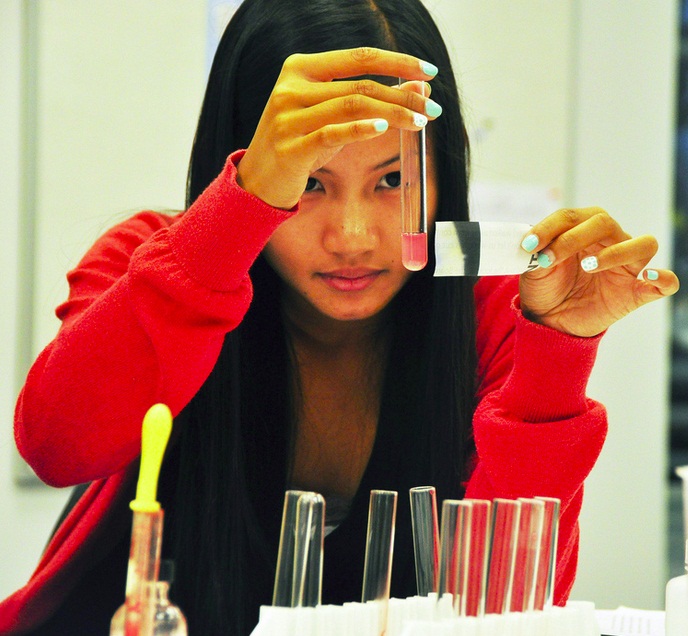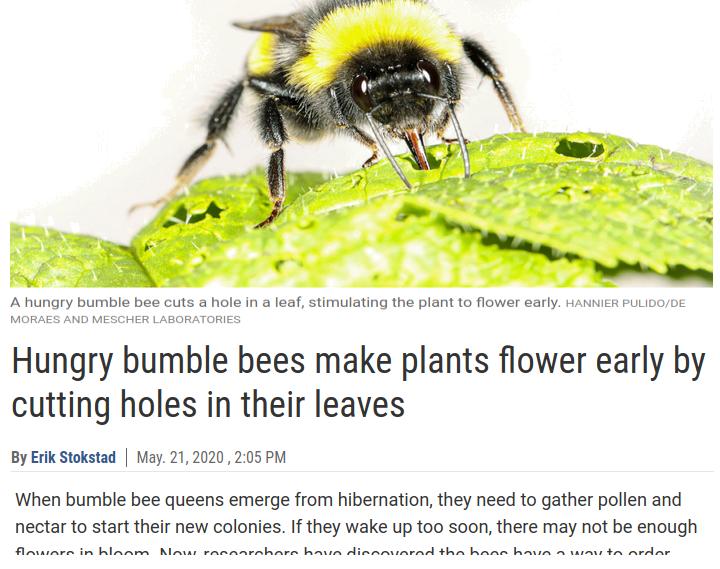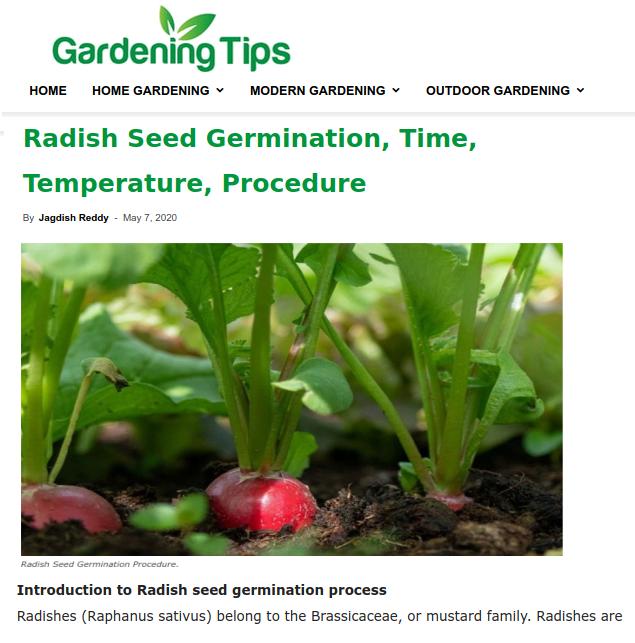Three ways to choose a topic for the IA
 Many student struggle to choose a topic for their IA investigation This page contains three activities which illustrate how to find an interesting IA topic. The activities look at, research in Science news, Gardening or lifestyle tips websites or Youtube life hack videos. The IA, should be an opportunity to demonstrate critical thinking using scientific evidence. By creating a research question and collecting data students can decide if a claim can be supported by the evidence. This skill is crucial in today's world. What better way to demonstrate a critical mind than to carry out an experimental test of a claim on the Internet.
Many student struggle to choose a topic for their IA investigation This page contains three activities which illustrate how to find an interesting IA topic. The activities look at, research in Science news, Gardening or lifestyle tips websites or Youtube life hack videos. The IA, should be an opportunity to demonstrate critical thinking using scientific evidence. By creating a research question and collecting data students can decide if a claim can be supported by the evidence. This skill is crucial in today's world. What better way to demonstrate a critical mind than to carry out an experimental test of a claim on the Internet.
Activity 1 - Reading Science news to find a topic for the IA
Knowing what to look for helps students to think of ideas for their IA. Here is an example of of a great news article which could inspire an IA.
Science News: Hungry bumble bees make plants flower early by cutting holes in their leaves
As you read the article look out for the answers to these five questions below.
1. Curious observation - what got the scientists started?
Biologists observed that hungry bumble bees were busily damaging the leaves or non-flowering plants.
2. Research question - what is the key question to answer?
The scientists wanted to find out, the research question, "Does the damage to the plants cause them to flower sooner?"
3. Hypothesis - is there a possible reason why this happens?
The hypothesis is that, the bees are causing the plants to flower more rapidly in response to the biting, thus providing flowers and pollen to the hungry bees. (Note: An odd "traditional" method of encouraging fruit trees to flower involved blasting away at the tree's trunk with a shotgun! See article by John V Creech here.)
4. Experiment details - could this experiment be repeatable in the lab or at home?
The researchers in this study grew black mustard (Brassica nigra). Ten plants were put in mesh bags with hungry bees and ten plants were left untouched by the bees. On average the plants exposed to bees flowered after 15 days, and those in the control experiment, 33 days.
You might not have hungry bees in the lab but growing small Brassica plants or tomatoes is possible in an IA.
5. How many variables are uncontrollable, and how many can be controlled variables?
There are many variables which can be controlled here, the size of the plants, the species, the soil type, the growing conditions etc.
There are some variables which are more difficult to control; the hunger of the bees, the air humidity.
6. Are there alternative methods which may be easier?
Another lab experiment mentioned is that the researchers cut small holes in leaves and found that these plants flowered earlier than controls.
This is a much easier design of lab to do in a school lab or at home. The title of the IA could be,
"Do cherry tomato plants, Lycopersicon esculentum, flower more quickly if their leaves are physically damaged with a small pin, simulating a bee bite?
This experiment is great for a student with a garden or greenhouse, and perhaps a family member who is interesting in growing vegetables. The design will require careful control of the growing conditions, care for the plants so that they reach flowering and some forward planning to ensure that there is sufficient data. Deciding how and where to cut holes in the laves may require further research into the behaviour of bees and could be interesting for a bee keeper.
Activity 2 - Reading gardening pages to find a topic for the IA
Here is an example of of a great gardening article which could inspire an IA.
Gardening tips: Radish seed germination time, temperature, procedure.
As you read the article look out for the answers to these five questions. A few suggestions are given as examples below.
Try to find more as you read.
Do the same thing for another article from this website:
1. Are there any claims or questions which catch your interest?
- The spacing of radish seeds.
- Water requirements of radish seeds.
- Reasons why radish seeds are not germinating.
- Should radish seeds be soaked before planting?
- Weed removal will reduce competition for moisture.
2. Which points in the list include a biological cause?
- Crowded seeds would not produce 'high-quality" roots
- Too little water would mean that radish seeds "abort" their germinating process
3. Hypothesis - is there a possible reason why this happens?
- Crowded seeds would compete for moisture and so grow more slowly.
- Too little water - enzymes may not be activated in the seed, the seed might die.
4. Experiment details - could this experiment be repeatable in the lab or at home?
- The crowded seed experiment would be possible in the lab or the kitchen, or garden.
- The water experiment would be possible in the lab (but it is a bit of an easy, standard lab)
5. Which of the ideas seems to have the best mix of factors?
- Clearly measurable dependant variable?
- Practically possible to test five values of the independent variable (or a test and control setup)?
- Interesting biological theory to explain a hypothesis?
- Rapid enough experiment to give results in the time allowed for the IA.
6. How many variables are uncontrollable, and how many can be controlled variables?
- Controlled variables - Many of the growing conditions in a seed germination experiment can be controlled if you have an incubator, or a plastic box in a cool place. E.g. Temperature, light intensity, day/night length, ?
- Uncontrollable variables - There are some variables which are uncontrollable, e.g. the genetic makeup of the seeds, air humidity.
- The key question is, "do the uncontrollable variables make it likely that the experiment will give unreliable data?"
Activity 3 - Watch a Youtube Gardening Hacks video to find a topic for the IA
Here is an example of of a youtube video which could inspire an IA, perhaps even 27 different IAs!
One of the comments on Youtube expresses clearly the problem
https://www.youtube.com/watch?v=jD8n2CKEWtA
1. As you watch the video, try to identify claims which could form the basis of a research question for an IA. Avoid anything ridiculous like growing sweetcorn cobs at (4 minutes)
Here are some examples from the first three minutes to get you started.
- Claim #1 - Aloe vera cuttings will root faster in banana than water.
- Claim #2 - Peanuts will germinate in water and tissue in 3 days.
- Claim #3 - Chick peas will germinate better in used tea bags than in water and soil.
- Claim #4 - Sprouting potatoes above water in a fish tank will clean the water.
- Claim #5 - Papaya seeds from the bottom of the glass will germinate better than papaya seeds which float.
- Claim #6 - Seeds in slices of guava will germinate faster than seeds planted on their own in soil
2. Evaluate whether there is a viable research question for the best claims
- Is there time and resources to complete this for the IA, or could this be an extended essay?
- What are the dependent and independent variables?
- Is there a plausible explanation why this happens?
- What is the biological hypothesis which can be explained and tested?
- What is the range of independent variable needed to collect sufficient data.
- How many repeats would be needed for a statistical test?
3. Keep the best two ideas to discuss with your teacher.
Click the eye icon to display an example
1. As you watch the video, try to identify a claim.
Claim #1 - Aloe vera cuttings will root faster in banana than water.
2. Evaluate whether there is a viable research question for the best claims
- Is there time and resources to complete this for the IA, or could this be an extended essay?
It would take about a weeks to test, and need at least ten little plantlets and ten bananas. - What are the dependent and independent variables?
DV = number of roots, length of roots, total root growth?
IV = With banana, without banana (control experiment) - Is there a plausible explanation why this happens?
The video suggests that potassium from the banana helps growth. - What is the biological hypothesis which can be explained and tested?
Potassium is an essential mineral for plant growth, it is important for water potential, and for some enzymes.
So this could be a good hypothesis to research and test. - What is the range of independent variable needed to collect sufficient data.
This experiment only has two values of dependent - banana or no banana,
Alternatively several solutions of different concentrations of potassium might be possible. - How many repeats would be needed for a statistical test?
With just two values of IV, it would be best to have at least 10 repeats for each experiment, 20 in total.
Five repeats would be the minimum to calculate a mean and standard deviation, or perform a t-test, but 10 would give more reliable results. How many variables are uncontrollable, and how many can be controlled variables?
With controllable variable could be, size of the aloe vera plantlets, size and ripeness of the bananas, variety of banana, environmental conditions like, temperature, light level, volume of water added, if any.
Uncontrollable variables: Is is possible to get all the Aloe vera plantlets from the same 'parent plant', if not, then genetic makeup of the plantlets is not controlled (but perhaps not the most important variable), is the size of the plantlets uncontrollable - this depends on your source of plantlets but they are unlikely to be exactly the same size.

 IB Docs (2) Team
IB Docs (2) Team



Sunny Light3 months ago